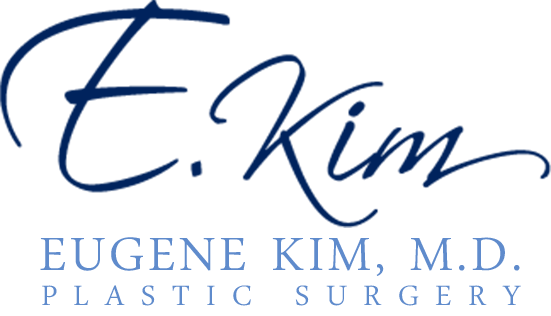Breastfeeding and Breast Implants
Beverly Hills, Los Angeles, Santa Monica
Women considering both motherhood and breast augmentation, you should rightfully be concerned about the impact of breast implants on breastfeeding. But separating fact from fiction on this matter can be difficult.
While there is a minor chance your breast augmentation procedure could affect your ability to breastfeed, the truth is that most women with breast implants are able to nurse without any complications. In communicating your goals and plans for motherhood in your breast augmentation consultation with experienced Beverly Hills cosmetic surgeon Dr. Eugene Kim, you and Dr. Kim can develop a breast augmentation plan that will give you the look you desire without interfering with your ability to breastfeed.
It is important to note that not all women are physically able to breastfeed, regardless of whether they have breast implants.
Breast Implant Incisions and Breastfeeding
Your milk ducts converge in the area below your nipples and are distributed near the upper portion of your areolas. Most breast implant incisions preserve the milk production glands and the milk ducts that lead to the nipple.
However, some studies indicate there may be a slightly increased risk for periareolar incisions interfering with breastfeeding. Periareolar incisions are made around the edge of the nipple on the bottom of the areola.
Next to the inframammary incision—which is made along your breast pocket—the periareolar incision is the most popular breast implant incision, and complications related to either incision are rare. Any effect on breastfeeding due to a periareolar incision would depend on the number of milk ducts and glands damaged during breast augmentation surgery.
Breast Implant Placement and Breastfeeding
Simply stated, the placement of your breast implants should have no effect on your ability to breastfeed.
Regardless of whether your breast implants are placed above the pectoral muscle (also known as subglandular placement) or under the pectoral muscle (submuscular), your breast implants are inserted behind the breast tissue. The location of the breast implants behind the tissue eliminates interference with the milk glands and milk ducts.
Some women with breast implants may feel discomfort during pregnancy, after childbirth and while breastfeeding due to the natural engorgement of the breasts added to the size and weight of their breast implants, but this discomfort is typically temporary and should not impact your ability to safely breastfeed.
Silicone Breast Implants and Breastfeeding
There is a wealth of misinformation regarding silicone breast implants, especially in terms of their potential effect on breastfeeding. While saline breast implants are filled with a sterile, salt-water solution that can be absorbed by the body in the event of ruptures, silicone breast implants are filled with a synthetic gel.
Although reports from the 1980s and ’90s associated silicone breast implants with a number of health problems, the FDA found no evidence connecting silicone breast implants to any systemic illnesses. Likewise, the FDA has found no evidence that mothers with silicone breast implants who breastfeed increase their infants’ risk for health problems.
If you would like additional information regarding breast augmentation and how it may affect motherhood, please contact the team at E. Kim Plastic Surgery, serving Beverly Hills, Los Angeles and Santa Monica, California.
